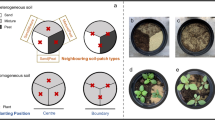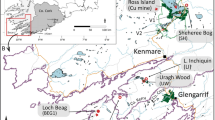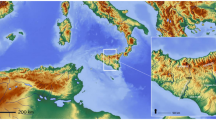Abstract
A significant body of recent research shows that the first east–west transmission of cereal crops, Triticum spp. (wheat) and Hordeum spp. (barley) from the west and millets (Setaria italica, foxtail millet, and Panicum miliaceum, common millet) from the east, took place sometime around the start of the 5th millennium bp, with part of the most likely route lying along the Tianshan mountains in northern **), Triticum spp., Hordeum spp., Setaria italica and Panicum miliaceum. Pooideae, Paniceae woody plants, Phragmites (reed) and Cyperaceae (sedges) were presumably also exploited for subsistence purposes in this area. We speculate that the strategy of growing a range of crops, wheat/barley, common millet and foxtail millet was adopted by the Bronze Age population in this region as a supplement to herding. The findings of this study help us to understand the dispersal of cultivation strategies across the Eurasian steppe via the **njiang region, and the communication between China and the West in the late Bronze Age.




Similar content being viewed by others
References
An C, Ji D, Chen F, Dong G, Wang H, Dong W, Zhao X (2010) Evolution of prehistoric agriculture in central Gansu Province, China: a case study in Qin’an and Li County. Chin Sci Bull 55:1,925–1,930
An C-B, Dong W, Li H, Chen Y, Barton L (2013) Correspondence regarding “Origin and spread of wheat in China” by Dodson, J.R., Li, X., Zhou, X., Zhao, K., Sun, N., Atahan, P. (2013), Quat Sci Rev 72:108–111. Quat Sci Rev 81:148–149
Ball T, Gardner JS, Brotherson JD (1996) Identifying phytoliths produced by the inflorescence bracts of three species of wheat (Triticum monococcum L., T. dicoccon Schrank., and T. aestivum L.) using computer-assisted image and statistical analyses. J Archaeol Sci 23:619–632
Ball TB, Gardner JS, Anderson N (1999) Identifying inflorescence phytoliths from selected species of wheat (Triticum monococcum, T. dicoccon, T. dicoccoides, and T. aestivum) and barley (Hordeum vulgare and H. spontaneum) (Gramineae). Am J Bot 86:1,615–1,623
Ball TB, Gardner JS, Anderson N (2001) An approach to identifying inflorescence phytoliths from selected species of wheat and barley. In: Meunier JD, Colin F (eds) Phytoliths: applications in earth sciences and human history. Balkema, Lisse
Ball TB, Ehlers R, Standing MD (2009) Review of typologic and morphometric analysis of phytoliths produced by wheat and barley. Breeding Sci 59:505–512
Ball T, Chandler-Ezell K, Dickau R et al (2016) Phytoliths as a tool for investigations of agricultural origins and dispersals around the world. J Archaeol Sci 68:32–45
Barton L, An C-B (2014) An evaluation of competing hypotheses for the early adoption of wheat in East Asia. World Archaeol 46:775–798
Bush MB (2002) On the interpretation of fossil Poaceae pollen in the lowland humid neotropics. Palaeogeogr Palaeoclimatol Palaeoecol 177:5–17
Chang C, Benecke N, Grigoriev FP, Rosen AM, Tourtellotte PA (2003) Iron Age society and chronology in South-east Kazakhstan. Antiquity 77:298–312
Chen FH, Dong GH, Zhang DJ et al (2015) Agriculture facilitated permanent human occupation of the Tibetan Plateau after 3,600 bp. Science 347:248–250
Chen T, Wang X, Dai J, Li W, Jiang H (2016) Plant use in the Lop Nor region of southern **njiang, China: Archaeobotanical studies of the Yingpan cemetery (25–420 ad). Quat Int 426:166–174
Cosmo ND (1994) Ancient Inner Asian nomads: their economic basis and its significance in Chinese history. J Asian Stud 53:1,092–1,126
D’Alpoim Guedes JA (2011) Millets, rice, social complexity, and the spread of agriculture to the Chengdu Plain and Southwest China. Rice 4:104–113
D’Alpoim Guedes J (2015) Rethinking the spread of agriculture to the Tibetan Plateau. Holocene 25:1,498–1,510
D’Alpoim Guedes J, Lu H, Li Y, Spengler RN, Wu X, Aldenderfer MS (2014) Moving agriculture onto the Tibetan plateau: the archaeobotanical evidence. Archaeol Anthropol Sci 6:255–269
D’Alpoim Guedes JA, Lu H, Hein AM, Schmidt AH (2015) Early evidence for the use of wheat and barley as staple crops on the margins of the Tibetan Plateau. Proc Natl Acad Sci 112:5,625–5,630
Dodson JR, Li X, Zhou X, Zhao K, Sun N, Atahan P (2013) Origin and spread of wheat in China. Quat Sci Rev 72:108–111
Dong G, Jia X, Elston R, Chen F, Li S, Wang L, Cai L, An C (2013) Spatial and temporal variety of prehistoric human settlement and its influencing factors in the upper Yellow River valley, Qinghai Province, China. China J Archaeol Sci 40:2,538–2,546
Feng X, Yan S, Ni J (2012) Pollen based reconstruction of vegetation in **njiang during the Holocene. Quat Sci 32:304–317
Flad R, Shuicheng L, **aohong W, Zhijun Z (2010) Early wheat in China: results from new studies at Donghuishan in the Hexi Corridor. Holocene 20:955–965
Frachetti MD (2009) Pastoralist landscapes and social interaction in Bronze Age Eurasia. University of California Press, Berkeley
Frachetti MD, Spengler Robert N, Fritz Gayle J, Mar’yashev Alexei N (2010) Earliest direct evidence for broomcorn millet and wheat in the central Eurasian steppe region. Antiquity 84:993–1010
Ge Y, Lu H, Zhang J, Wang C, He K, Huan X (2016) Phytolith analysis for the identification of barnyard millet (Echinochloa sp.) and its implications. Archaeol Anthropol Sci. doi:10.1007/s12520-016-0341-0
Gerling C (2015) Prehistoric mobility and diet in the West Eurasian steppes 3,500 to 300 bc: An isotopic approach. (Topoi – Berlin Studies of the Ancient Word 25). De Gruyter, Berlin
Gu S, Du J (1981) Studies of the relationship between temperature and the growth of foxtail millet. J Shanxi Agric Sci 4:16–17
Harris DR (1998) The origins of agriculture in southwest Asia. Rev Archaeol 19:5–11
Jia PW, Betts A, Wu X (2011) New evidence for bronze age agricultural settlements in the Zhunge’er (Junggar) Basin, China. J Field Archaeol 36:269–280
Jia X, Dong G, Li H, Brunson K, Chen F, Ma M, Wang H, An C, Zhang K (2013) The development of agriculture and its impact on cultural expansion during the late Neolithic in the Western Loess Plateau, China. Holocene 23:85–92
Jiang H, Wu Y, Wang H, Ferguson DK, Li C-S (2013) Ancient plant use at the site of Yuergou, **njiang, China: implications from desiccated and charred plant remains. Veget Hist Archaeobot 22:129–140
Jones M, Hunt H, Lightfoot E, Lister D, Liu X, Motuzaite-Matuzeviciute G (2011) Food globalization in prehistory. World Archaeol 43:665–675
Kohl PL (2007) The making of Bronze Age Eurasia. Cambridge University Press, Cambridge
Kondo R, Childs C, Atkinson I (1994) Opal phytoliths of New Zealand. Manaaki Whenua Press, Canterbury
Koryakova L, Epimakhov A (2007) The Urals and western Siberia in the Bronze and Iron Ages. Cambridge University Press, Cambridge
Kuz’mina EE (2007) The origin of the Indo-Iranians. Brill, Boston
Li S (2008) The earliest Triticeae Dumort. in China as seen through archaeological excavation. In: Shengzhang H (ed) (Asian Civilization vol. 4) Sanqin chubanshe, **’an, pp 50–72
Li C, Lister DL, Li H et al (2011) Ancient DNA analysis of desiccated wheat grains excavated from a Bronze Age cemetery in **njiang. J Archaeol Sci 38:115–119
Liu X, Herzschuh U, Shen J, Jiang Q, **ao X (2008) Holocene environmental and climatic changes inferred from Wulungu Lake in northern **njiang, China. Quatern Res 70:412–425
Lu HY, Liu KB (2003a) Morphological variations of lobate phytoliths from grasses in China and the south-eastern United States. Divers Distrib 9:73–87
Lu HY, Liu KB (2003b) Phytoliths of common grasses in the coastal environments of southeastern USA. Estuarine Coastal Shelf Sci 58:587–600
Lu H, Zang X, Ze M et al (2005) Millet noodles in late Neolithic China. Nature 437:967–968
Lu HY, Wu NQ, Yang XD, Jiang H, Liu KB, Liu TS (2006) Phytoliths as quantitative indicators for the reconstruction of past environmental conditions in China I: phytolith-based transfer functions. Quat Sci Rev 25:945–959
Lu HY, Zhang JP, Wu NQ, Liu KB, Xu DK, Li Q (2009) Phytoliths analysis for the discrimination of foxtail millet (Setaria italica) and common millet (Panicum miliaceum). PLoS ONE 4:e4448
Ma D, Wei Y (1984) The studies of ecotypes in different cultivars of common millets. Inner Mong Agric Sci Technol 1:18–24
Madella M, García-Granero JJ, Out WA, Ryan P, Usai D (2014) Microbotanical evidence of domestic cereals in Africa 7000 years ago. PLoS One 9:e110177
Miller NF, Spengler RN, Frachetti M (2016) Millet cultivation across Eurasia: origins, spread, and the influence of seasonal climate. Holocene 26:1,566–1,575
Mulholland SC, Rapp G Jr (1992a) A morphological classification of grass silica-bodies. In: Rapp GJr Mulholland SC (ed) Phytolith systematics: emerging issues. Plenum Press, New York, pp 65–89
Mulholland SC, Rapp G Jr (1992b) Phytolith systematics: an introduction. In: Mulholland SC, Rapp G Jr (eds) Phytolith systematics. Springer, Berlin, pp 1–13
Murphy EM, Schulting R, Beer N, Chistov Y, Kasparov A, Pshenitsyna M (2013) Iron Age pastoral nomadism and agriculture in the eastern Eurasian steppe: implications from dental palaeopathology and stable carbon and nitrogen isotopes. J Archaeol Sci 40:2,547–2,560
Out WA, Madella M (2016) Morphometric distinction between bilobate phytoliths from Panicum miliaceum and Setaria italica leaves. Archaeol Anthropol Sci 8:505–521
Pearsall DM (2000) Paleoethnobotany: a handbook of procedures, 2nd edn. Academic Press, San Diego
Piperno DR (1984) A comparison and differentiation of phytoliths from maize and wild grasses: use of morphological criteria. Am Antiqu 49:361–383
Piperno DR (1988) Phytolith analysis: An archaeological and geological perspective. Academic Press, San Diego
Piperno DR (2006) Phytoliths: A comprehensive guide for archaeologists and paleoecologists. AltaMira Press, New York
Prance G, Nesbitt M (2012) The cultural history of plants. Routledge, Oxford
Qin L, Fuller D, Zhang H (2010) Modelling wild food resource catchments amongst early farmers: case studies from the lower Yangtze and central China. Quat Sci 30:245–261
Qiu Z, Zang Z, Shang X et al (2014) Paleo-environment and paleo-diet inferred from Early Bronze Age cow dung at **aohe Cemetery, **njiang, NW China. Quat Int 349:167–177
Rachie KO (1975) The millets: importance, utilization and outlook. International Crops Research Institute for the Semi-arid Tropics, Hyderabad
Rosen AM (1992) Preliminary identification of silica skeletons from Near Eastern archaeological sites: an anatomical approach. In: Rapp Jr. GR, Mulholland SC (ed) Phytolith systematics: emerging issues. Plenum, New York, pp 129–147
Rosen AM, Weiner S (1994) Identifying ancient irrigation: a new method using opaline phytoliths from emmer wheat. J Archaeol Sci 21:125–132
Rosen AM, Chang C, Grigoriev FP (2000) Palaeoenvironments and economy of Iron Age Saka-Wusun agro-pastoralists in southeastern Kazakhstan. Antiquity 74:611–623
Runge F, Laws KR, Neve C (1999) The opal phytolith inventory of soils in central Africa- quantities, shapes, classification, and spectra. Rev Palaeobot Palynol 107:23–53
Schüler L, Behling H (2011) Poaceae pollen grain size as a tool to distinguish past grasslands in South America: a new methodological approach. Veget Hist Archaeobot 20:83–96
Shishlina N, Hiebert F (1998) The steppe and the sown: Interaction between Bronze Age Eurasian nomads and agriculturalists. In: Victor M (ed) The Bronze age and early iron age peoples of eastern central asia. Institute for the Study of Man, Washington D.C., pp 222–237
Spengler R, Frachetti M, Doumani P, Rouse L, Cerasetti B, Bullion E, Mar’yashev A (2014) Early agriculture and crop transmission among Bronze Age mobile pastoralists of Central Eurasia. Proc R Soc London B 281:20133382
Tong T, Jia PW, Niu G, Wu X (2013) A brief report on the excavation of Luanzagangzi site in Jimusar County, **njiang. Res China’s Front Archaeol 1:43–52
Tubb HJ, Hodson MJ, Hodson GC (1993) The inflorescence papillae of the Triticeae: a new tool for taxonomic and archaeological research. Ann Bot 72:537–545
Twiss PC, Suess E, Smith RM (1969) Division S-5-soil genesis, morphology, and classification (morphological classification of grasses phytolith). Soil Sci Soc Am Proc 33:109–115
Vainshtein S (1980) Nomads of South Siberia. The pastoral economies of Tuva. Cambridge University Press, Cambridge
Wang Q (1992) An analysis and evaluation of agroclimatic resources in **njiang. Agric Res Arid Areas 10:91–97
Wang Y, Lu H (1993) Phytolith study and its application. China Ocean Publishing, Bei**g
Weisskopf AR, Lee G-A (2016) Phytolith identification criteria for foxtail and broomcorn millets: a new approach to calculating crop ratios. Archaeol Anthropol Sci 8:29–42
Yan S, Kong Z, Yang Z, Ni J, Li S (2003) Fluctuation of timberline and environment change near the Northern piedmonts of Tianshan Mts. during the last 2000 zears. Sci Geogr Sin 23:699–704
Yan S, Li S, Kong Z, Yang Z, Ni J (2004a) The pollen analyses and environment changes of the Dongdaohaizi Area in Urumqi, **njiang. Quat Sci 24:463–468
Yan S, Mu G, Kong Z, Ni J, Yang Z (2004b) Environmental evolvement and human activity impact in the Late Holocene on the North slopes of the Tianshan Mountains, China. J Glaciol Geocryol 26:403–410
Yang R, Yang Y, Li W, Abuduresule Y, Hu X, Wang C, Jiang H (2014) Investigation of cereal remains at the **aohe Cemetery in **njiang, China. J Archaeol Sci 49:42–47
Yang X, Fuller DQ, Huan X et al (2015) Barnyard grasses were processed with rice around 10,000 years ago. Sci Rep 5:16251. doi:10.1038/srep16251, http://www.nature.com/articles/srep16251 (supplementary-information)
Zhang Y, Kong Z, Ni J, Yan S, Yang Z (2007) Late Holocene palaeoenvironment change in central Tianshan of **njiang, northwest China. Grana 46:197–213
Zhang J, Lu H, Wu N et al (2010) Phytolith evidence for rice cultivation and spread in Mid-Late Neolithic archaeological sites in central North China. Boreas 39:592–602
Zhang JP, Lu HY, Wu NQ, Yang XY, Diao XM (2011) Phytolith analysis for differentiating between foxtail millet (Setaria italica) and green foxtail (Setaria viridis). PLoS One 6:e19726. doi:10.1371/journal.pone.0019726
Zhang J, Lu H, Gu W et al (2012) Early mixed farming of millet and rice 7800 years ago in the middle Yellow River region, China. PLoS One 7:e52146. doi:10.1371/journal.pone.0052146
Zhang G, Wang S, Ferguson DK, Yang Y, Liu X, Jiang H (2015a) Ancient plant use and palaeoenvironmental analysis at the Gumugou Cemetery, **njiang, China: implication from desiccated plant remains. Archaeol Anthropol Sci. doi: 10.1007/s12520-015-0246-3
Zhang H, Zhang Y, Kong Z, Yang Z, Li Y, Tarasov PE (2015b) Late Holocene climate change and anthropogenic activities in north **njiang: evidence from a peatland archive, the Caotanhu wetland. Holocene 25:323–332
Acknowledgements
This research was financially supported by the National Natural Science Foundation of China (Grant No. 41472154, 41230104 and 41430103), 973 Program (Grant No. 2015CB953801), Youth Innovation Promotion Association CAS (No. 2017096), and a scholarship from the China Scholarship Council.
Author information
Authors and Affiliations
Corresponding author
Additional information
Communicated by A. Fairbairn.
Electronic supplementary material
Below is the link to the electronic supplementary material.
Rights and permissions
About this article
Cite this article
Zhang, J., Lu, H., Jia, P.W. et al. Cultivation strategies at the ancient Luanzagangzi settlement on the easternmost Eurasian steppe during the late Bronze Age. Veget Hist Archaeobot 26, 505–512 (2017). https://doi.org/10.1007/s00334-017-0608-0
Received:
Accepted:
Published:
Issue Date:
DOI: https://doi.org/10.1007/s00334-017-0608-0




